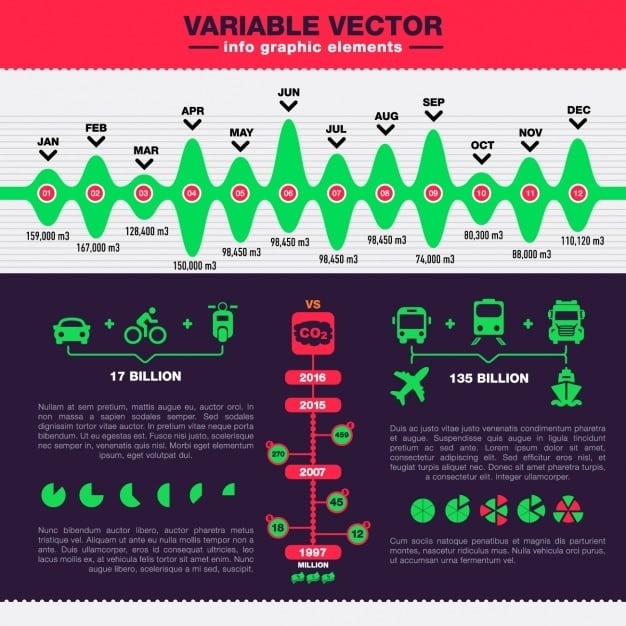MaaS in the US: Can Integrated Platforms Save Commuters 20%?

Mobility-as-a-Service (MaaS) is gaining traction in the US, promising integrated platforms that could potentially save commuters up to 20% on transportation costs by streamlining access to various mobility options like public transit, ride-sharing, and bike rentals.
The rise of Mobility-as-a-Service (MaaS) in the US: Will Integrated Platforms Save Commuters 20% on Transportation Costs? is poised to reshape urban mobility, offering a streamlined approach to accessing various transportation options.
Understanding Mobility-as-a-Service (MaaS)
Mobility-as-a-Service (MaaS) is a transformative concept that’s reshaping urban transportation. It aims to integrate different modes of transport into a single platform, offering users a seamless and convenient way to plan, book, and pay for their journeys.
This integrated approach can potentially save commuters significant time and money. By optimizing routes and utilizing diverse transportation options, MaaS can provide a more efficient and cost-effective alternative to traditional car ownership.

Key Components of a MaaS Platform
MaaS platforms are built upon a few core components that work together to deliver a cohesive user experience. These include:
- Integration of Transport Modes: Combining public transport, ride-sharing, bike rentals, and potentially even car rentals into a single platform.
- User-Centric Design: Focusing on ease of use and personalization, allowing users to tailor their travel experiences according to their needs.
- Unified Payment System: Enabling users to pay for all their transportation needs through a single account, simplifying the payment process.
MaaS not only improves accessibility for individuals but also can contribute significantly to reducing traffic congestion and carbon emissions within urban areas.
The Current State of MaaS in the US
While MaaS is still in its early stages in the US compared to some European countries, there’s growing interest and adoption. Various pilot projects and initiatives are underway to explore its potential.
Several factors, like technological advancements and growing urban populations, are driving the adoption of MaaS across different cities in the United States.
Challenges and Opportunities
Despite the promise, several challenges need to be addressed for successful MaaS implementation in the US:
- Fragmented Transportation Systems: The US has a highly fragmented transportation landscape, making integration complex.
- Data Privacy Concerns: Collecting and sharing user data across different platforms raises privacy concerns that need to be carefully addressed.
- Regulatory Hurdles: Adapting existing regulations to accommodate new mobility services can be challenging.
However, overcoming these challenges presents significant opportunities for creating more sustainable and efficient transportation systems in the US.
Early adopters are seeing reduced commute times, lower transport costs, and a significant drop in personal vehicle usage, leading to a more sustainable lifestyle.
Potential Cost Savings for Commuters
One of the most compelling arguments for MaaS is its potential to save commuters money on transportation costs. By offering access to a wider range of options and optimizing routes, MaaS can help individuals reduce their reliance on personal vehicles.
It is believed that MaaS initiatives across the country can reduce an average commuter’s transportation costs by 20% through incentives and accessible choices.

How MaaS Can Reduce Costs
Several mechanisms allow MaaS to deliver cost savings:
- Reduced Car Ownership: By providing convenient alternatives, MaaS can discourage individuals from owning a car, eliminating associated costs like insurance, maintenance, and fuel.
- Optimized Route Planning: MaaS platforms can leverage real-time traffic data and integrated scheduling to find the most efficient and cost-effective routes.
- Subscription Models: Some MaaS platforms offer subscription packages that provide unlimited access to certain transportation services for a fixed monthly fee.
By carefully choosing the mobility mix that suits their needs and making use of integrated planning, a daily commuter can efficiently eliminate major transportation costs.
The Role of Integrated Platforms
Integrated platforms are at the heart of MaaS, providing the essential technology to combine different transportation options and offer users a seamless experience. These platforms act as a central hub for all mobility needs.
Integrated platforms in MaaS work by aggregating diverse transportation services into a unified system and, through this, facilitate route planning, booking, and payment.
Key Features of Integrated Platforms
The effectiveness of an integrated MaaS platform is strongly dependent on a set of its key features, which typically include:
- Real-Time Information: Providing up-to-date information on schedules, availability, and pricing for all transportation options.
- Intelligent Route Planning: Recommending optimal routes based on factors like cost, time, and user preferences.
- Secure Payment Processing: Enabling users to pay for all their transportation needs through a secure and convenient system.
Robust integrated platform functionality is essential for improving ease of use and encouraging broad use among different user groups in a MaaS ecosystem.
Challenges to Widespread Adoption
Despite its potential benefits, MaaS faces several challenges that could hinder its widespread adoption in the US. Overcoming these challenges will require collaboration between government, private companies, and individuals.
The widespread adoption of fully integrated MaaS systems in the US faces a variety of challenges, including fragmentation and regulatory complexities.
Overcoming Barriers
Key strategies to address these barriers and broaden the adoption of MaaS include:
- Collaboration and Standardization: Encouraging collaboration between different transportation providers and establishing common data standards.
- Addressing Equity Concerns: Ensuring that MaaS is accessible and affordable for all members of society, regardless of income or location.
- Education and Awareness: Raising public awareness of the benefits of MaaS and promoting its adoption through targeted marketing campaigns.
To facilitate wider uptake, the US government is exploring financial incentives to encourage companies that are looking to launch MaaS platforms in major cities.
The Future of Urban Mobility with MaaS
MaaS has the potential to transform urban mobility in the US, creating more sustainable, efficient, and equitable transportation systems. As technology continues to advance and cities become more congested, MaaS is likely to play an increasingly important role.
With the ongoing developments of MaaS, city planners across the US forecast significant change in daily commute routines.
Trends and Predictions
Some key trends and predictions for the future of MaaS include:
- Increased Integration with Autonomous Vehicles: As self-driving cars become more prevalent, they are likely to be seamlessly integrated into MaaS platforms.
- Personalized Mobility Experiences: MaaS platforms will become increasingly personalized, tailoring transportation options to individual needs and preferences.
- Expansion into New Markets: MaaS is likely to expand beyond urban areas, serving the transportation needs of suburban and rural communities.
These changes reflect a growing trend towards sustainable, user-centric transportation solutions that make cities more livable and accessible.
| Key Point | Brief Description |
|---|---|
| 📱Integrated Platforms | Unifying transport options into one user-friendly interface. |
| 💰Cost Savings | Potential to reduce commuter expenditure by up to 20%. |
| 🚦Challenges | Fragmentation and regulatory concerns remain significant. |
| 🌍Future | Autonomous vehicles may play an increasingly significant role. |
FAQ
▼
MaaS integrates various transport modes (public, private) into a single platform. It streamlines travel planning, booking, and payments, focusing on sustainable mobility.
▼
MaaS can save money by offering efficient, cost-effective routes using optimized costs. It leads to minimized car dependence and optimized usage of transportation options.
▼
Integrated platforms are central to MaaS. Platforms connect diverse transport services, facilitating easy planning, booking, and secure payments. Data use requires user consent.
▼
Challenges include transport fragmentation, data privacy, regulation. Overcoming them requires greater collaboration, standardization, and addressing equity to ensure wider adoption.
▼
Future trends for MaaS involve self-driving car integration. Also, personalized mobility services. Additionally, expansion of coverage to cover suburban and rural regions.
Conclusion
The rise of Mobility-as-a-Service in the US demonstrates the huge potential of integrated transport platforms. These platforms effectively save commuters money and improve transport options. By overcoming the adoption challenges, MaaS stands to change urban transit. This enhances sustainability, accessibility, and quality of life in urban centers and environments.





